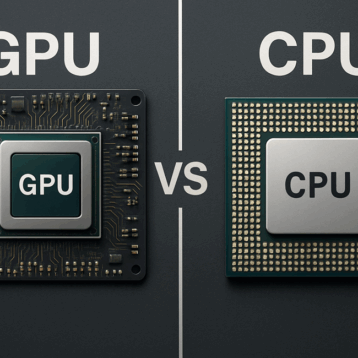The telecommunications industry has constantly been at the leading edge of technological innovation, continuously evolving to satisfy the ever-growing demands of purchasers and organizations alike. In recent years, artificial intelligence (AI) and Machine Learning (ML) have emerged as transformative technologies that are reshaping the telecommunications panorama. These technologies are making networks smarter, improving patron reports, and optimizing community infrastructure. The telecommunications industry is recognizing the significance of AI and ML, leading to a surge in demand for skilled experts who can harness the power of those technologies. This is where the idea of the “Artificial Intelligence Bootcamp” comes into play. In this article, we will discover the impact of AI and ML on the telecommunications enterprise within the United States and look at whether an AI bootcamp could help secure your future professional life.
The Rise of AI and Machine Learning
AI and ML are the riding forces behind the transformation of the telecommunications area. AI refers to the potential of machines to perform tasks that generally require human intelligence, such as comprehension, reasoning, problem-solving, and choice-making. ML is a subset of AI that specializes in the improvement of algorithms and statistical models that permit computing systems to enhance their overall performance on a specific undertaking by interpreting statistics.

Domains employing AI and ML
The integration of AI and ML in telecommunications is ordinarily seen in the following domains:
Network Management and Optimization:
AI and ML algorithms are being used to improve community control and optimization. This technology can expect community congestion, detect anomalies, and automate aid allocation, leading to a step forward in network performance and reduced downtime.
Customer Service and Support:
Chatbots and virtual assistants powered with the aid of AI are becoming more and more ubiquitous within the telecommunications industry. They provide instant customer service, answer frequently asked questions, and assist with troubleshooting, enhancing user satisfaction.
Predictive Maintenance:
AI-driven predictive maintenance can perceive potential network or gadget screw-ups before they arise. This proactive technique minimizes service disruptions and lowers operational prices.
Data Analytics:
AI and ML allow telecom companies to analyze extensive amounts of statistics, gaining insights into patron behavior, options, and marketplace traits. This records facilitates tailoring services and advertising strategies.
Artificial Intelligence Bootcamp: A Game Changer
An AI Bootcamp is an in-depth, short-term schooling program that equips people with the skills and information needed to paint with AI and ML in various industries, including telecommunications. These boot camps usually cover:
Fundamentals of AI and ML
Participants research the fundamentals of AI and ML, and how they’re implemented in telecommunications.
Hands-On Experience
Practical sporting events and initiatives assist participants advantage of real-global experience in implementing AI and ML answers.
Industry-Relevant Curriculum
The curriculum is tailored to the specific desires and challenges of the telecommunications area.
Networking Opportunities
Participants connect to industry experts, potential employers, and fellow boot camp attendees.
Job Placement Assistance
Many AI boot camps provide task placement services, supporting graduates to locate employment in the telecommunications industry.
The AI Bootcamp is proving to be a game changer inside the telecommunications sector. It addresses the industry’s growing want for AI and ML talent and provides people with a quick-tune possibility to enter this dynamic field.
Transforming Telecommunications with AI and ML
Network Optimization:
AI and ML algorithms are playing a pivotal role in optimizing community performance. This technology constantly screens community visitors and makes dynamic changes to direction facts efficaciously. For instance, for the duration of peak hours, AI can reroute traffic to save you congestion and keep the carrier best.
Machine-gaining knowledge also facilitates in predicting community troubles, which include hardware disasters or cyberattacks, and takes preventive measures. This proactive approach notably reduces network downtime and improves the overall user experience.
Predictive Maintenance:
Telecommunications infrastructure is vast and complex, together with numerous additives. AI and ML algorithms are used to predict gadget malfunctions. By studying historical statistics, those structures can perceive patterns that precede hardware or software program malfunction. This data-driven technique permits telecom groups to agenda protection activities at the right time, decreasing unplanned outages.
Customer Service Enhancement:
AI-powered chatbots and virtual assistants are reworking customer service inside the telecommunications enterprise. These virtual sellers can deal with an extensive range of purchaser queries and problems, providing quick and correct responses 24/7. They improve customer satisfaction by means of reducing wait times and providing constant guidance.
Furthermore, AI-driven analytics are used to customize consumer reviews. Telecom providers can analyze consumer facts to offer tailored services, promotions, and suggestions based on user possibilities and conduct.
Data Analytics:
The telecommunications area generates massive amounts of information every day. AI and ML are helpful for processing and deriving insights from this information. Telecom companies can use predictive analytics to anticipate customer needs and traits, permitting them to alter their offerings accordingly.
These technologies also are useful for fraud detection and cybersecurity. By reading community site visitors’ styles, AI can identify unusual events that can suggest a security breach, supporting to protection of each network and consumer information.
Challenges and Considerations
While the transformation of the telecommunications enterprise through AI and ML is promising, it comes with a few challenges and concerns:
Data Privacy and Security:
Handling sensitive client data requires stringent information privacy measures. Telecommunications agencies need to prioritize data safety to ensure customers accept it as true and comply with regulations.
Skill Shortage:
The fast adoption of AI and ML technologies has created a call for skilled professionals. An AI Bootcamp is one way to bridge this skills gap; however, corporations must set aside money to put into training and development.
Regulatory Compliance:
Telecom corporations want to navigate a complex myriad of policies and compliance necessities. Implementing AI and ML solutions whilst adhering to those policies can be hard.
Ethical Concerns:
As AI and ML structures become extra independent, moral worries around decision-making, bias, and transparency should be addressed to hold public belief.
Conclusion
AI and Machine learning development services are remodeling the telecommunications enterprise within the United States by way of improving network management, optimizing patron reviews, and realizing predictive security. The upward thrust provided by AI Bootcamps are playing a critical rolein meeting the enterprise’s call for AI and ML understanding. As telecommunications companies preserve to include those technologies, they need to additionally address challenges related to data security, skills shortage, regulatory compliance, and ethical issues. With the proper strategies and investments, AI and ML will continue to drive innovation in the telecommunications zone, in the long run benefiting enterprises and customers.










